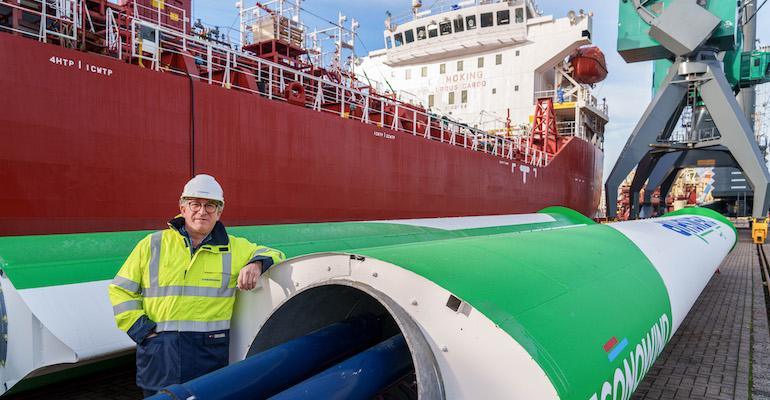The 16,111 dwt tanker now has four 16 metre-high aluminium Ventofoils from Econowind, creating a direct wind surface of 180 sq metres.
Turbo-sail technology multiplies this by a factor of five, raising the total wind surface to the equivalent of 900 sq metres, the company explained. It expects to achieve fuel savings and emission reductions of 10%.
The vessel will operate on Chemship’s trans-Atlantic trade between the east coast of the US and the Mediterranean. Westerly winds typically prevail on this route.
Wind Assisted Propulsion Systems (WAPS) are attracting significant attention as owners and operators seek to improve their ships’ sustainability by cutting emissions. WAPS now offer a direct benefit as owners trading to, from, or within the European Economic Area are now liable to pay for their ship’s carbon emissions. These must be monitored, reported, and verified from the beginning of January this year with the first payments based on emissions performance due by September 2025.
Chemship CEO, Niels Grotz, said: “Our customers increasingly demand CO2 reports. The better our ships perform, the higher the rating from our customers. Fewer emissions are not only beneficial for the environment, you will also notice it directly in your wallet.”
The company’s Operations Director, Michiel Marelis, explained its choice of wind-assist technology. “Shipping is evolution,” he declared, “one step at a time. Chemship was looking for a solution that would not interfere with normal operations. These wind sails were easy to install without adding reinforcements to the ship.
“They are lightweight, have a small deck ‘footprint’ and do not obstruct the crew’s line of sight. At the push of a button, they can fold or set the sails as needed. Above wind force seven, the sails fold automatically, which is much safer. Now it is learning by doing. With positive results, we will also equip the next vessel with VentoFoils,” he added.
Marelis continued by outlining the company’s broader sustainability strategy. “The beauty of these turbo-sails is that you can show it to customers. They immediately capture everyone’s imagination. We hope this will inspire others to choose wind-assisted propulsion too. We also focus on less visible aspects such as improved lubricating oils and a coating that enables the ship to glide through the water more efficiently. Cumulatively, this leads to fuel savings of over 15%. This all goes hand in hand with a CO2 reduction. Chemship remains committed to making the fleet more sustainable.”
Sail manufacturer Econowind is based in Groningen, Netherlands.

Copyright © 2024. All rights reserved. Seatrade, a trading name of Informa Markets (UK) Limited.
Add Seatrade Maritime News to your Google News feed.  |

